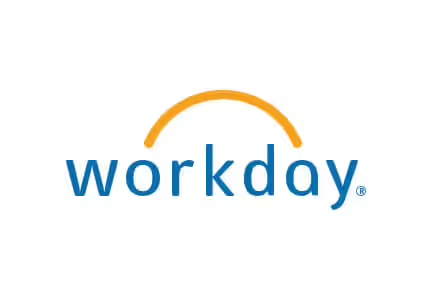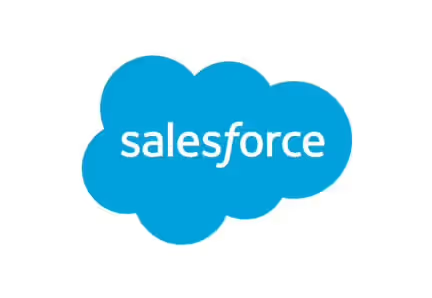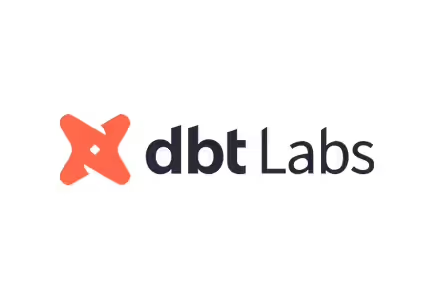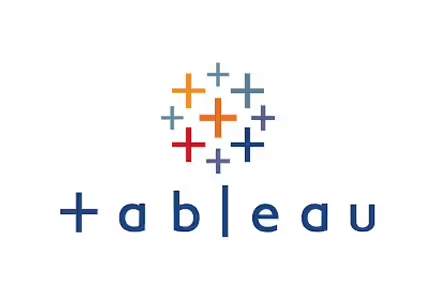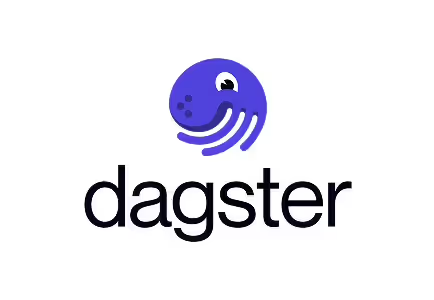Data governance insights and strategy

ERP Readiness Starts with Clean Data: Inside a Successful MDM Strategy
Accurate, consistent, and well-governed master data is critical to a business’ operations. For our manufacturing client, their master data was managed inconsistently across systems, creating inefficiencies in operations. The organization was uncertain about the effectiveness of the proposed ERP implementation. This feeling was driven by concerns over data quality, reporting issues, and duplication across legacy systems – all of which were impacting business efficiency.
As the client prepared for a future Enterprise Resource Plann (ERP) consolidation, an MDM strategy was essential to ensure data integrity, reduce manual workarounds, and improve decision-making for master data used throughout the organization. Definian stepped in to provide a helping hand in crafting an MDM strategy and potential solutions to set them up for their future implementation.
Business Challenges
- System Fragmentation Due to M&A: The client had multiple business units on different legacy ERP systems resulting from mergers and acquisitions, leading to data duplication and inconsistent reporting.
- Duplication in Supplier information led to inaccurate supplier performance reporting, operational inefficiencies, and even strained supplier relationships. Inaccurate addresses created problems with product returns and on-time payments.
- Duplicate customer records led to duplicative communications and damaged relationships. Inaccurate delivery addresses and contact details disrupted communication, delayed payments, and sometimes led to missed deliveries.
- Lack of a Centralized Source of Truth: There was no authoritative system for customer, product, or supplier data as the information is all coming from different legacy systems. A lack of a source of truth hindered reporting and diminished operational efficiency.
- SKU Proliferation: Significant data quality issues stemmed from SKU proliferation. Our root cause analysis revealed that poor interfacing and design decisions between their product configurator and ERP system led to the continuous creation of redundant and overly specific product records.
- The product configurator created a new SKU for every unique product permutation, and the ERP blindly accepted each as a new, valid SKU.
- Existing processes resulted in millions of SKUs, despite the client offering only around 50 base products.
- Analysis showed that 80% of SKUs had no inventory or transactional activity for over two years, indicating massive redundancy.
- There was no SKU lifecycle management process, and no logic in place to check for existing similar configurations before creating new SKUs.
- Lack of Governance and Ownership: There was no defined data governance model to manage data quality, stewardship, or ownership, which is critical for sustained MDM success.
Facing these business challenges and heading into a future ERP implementation, the client needed to assess the best steps to take to ensure success. It was imperative they considered MDM as one of those steps.
How do I know that I need MDM?
There are four primary triggers for an MDM Implementation:
- My organization is considering an ERP implementation. There is no better time to investigate your data management process and data quality than when you are considering a mass migration to a new target system. A solid MDM plan can save your resources hours upon hours of work dealing with bad data.
- My organization is considering an MDM tool. The right tool for you is out there, but you need experts to help you figure out just exactly how to utilize that tool.
- My organization has gone through mergers and acquisitions. M&A can be a headache on data quality, as numerous legacy systems are often brought into the mix and allow for duplication and inaccurate reporting.
- My organization has a Product Information Management system that needs an overhaul. Your PIM needs assistance, as it is likely to create more SKUs than you need due to custom product attributes.
Our client faced all these issues, so it was clear from a business perspective to pursue an MDM implementation. In came Definian, and after months of work, the team delivered solutions and a scalable strategy.
MDM Strategy and Solutions We Delivered
- Master Record Structures: Defined master record structures for customer and product data, focusing on essential attributes and matching rules critical to daily business operations. This supports data consolidation and cleansing efforts.
- Key attributes included Customer Name and Class and how to match up to the address and contact information in the legacy systems. This analysis streamlined the uncovering of duplicate Customers, including over 1300 duplicate groups in one legacy system.
- Through match and merge rules, the entity resolution process will accurately consolidate these records, merging multiple customer instances into a single, authoritative golden record.
- Through this consolidation, the client maintains an accurate, unified customer record, which simplifies reporting and eliminates redundant data management efforts. This process establishes a trustworthy foundation for operational efficiency, informed decision-making, and reliable strategic insights.
- Governed Workflows: Developed onboarding workflows determining where data should originate (e.g., engineering (PLM) vs. sales (ERP)) and how approvals and data updates should be managed, tailored to centralized MDM models.
- This allows for a streamlined process in which everyone knows their role, and the process does not rely on outside factors to inhibit the efficiency of data entry. Reducing manual entry minimizes user error and its impact.
- Root Cause Analysis of SKU Issues: Definian identified the configurator logic and ERP behavior as causes for these issues. We provided the following recommendations to the client as solutions:
- Implement SKU lifecycle management: to archive or purge inactive SKUs.
- Add validation mechanisms to the ERP to detect and reuse existing SKUs
- Improve cross-functional communication between business units and system stakeholders to reduce fragmentation.
- Integrate MDM as a preemptive step before ERP consolidation to create a clean, authoritative source of master data, including products.
- Data Governance Framework: Introduced accountability for data ownership and stewardship within master data domains, and embedded governance considerations into MDM designs to ensure long-term data health.
- Support for Future ERP Migration: Positioned MDM as a preparatory step to ensure clean, consistent data feeds into the planned ERP consolidation, reducing downstream complexity and risk.
Definian provided a pathway to data readiness for the client. The business benefitted from proactively addressing their data quality before launching an ERP transformation, recognizing that clean and governed master data is foundational for successful digital transformation. It is important to build the foundation and toolbox for migration with an MDM framework in place and smartly look for a partner to help your organization solidify that foundation before embarking on an ERP migration. By being proactive, this client allowed themselves to understand the best tools to utilize the build up their data quality before it needs to be fixed.
Looking for a reliable partner for your ERP implementation? Reach out to our data experts for more information!

Data Governance: Taming the Wild Family Circus for Indian Companies
Picture this: Your company’s data is like a big, chaotic family household. You’ve got teenagers hoarding secrets in their rooms, toddlers finger-painting on important documents, and that one uncle who keeps bringing home random objects he found on the street. Sound familiar? Well, welcome to the world of data governance — it’s time to bring some order to this madhouse!
What is Data Governance?
Data governance is like being the superhero parent in this family circus. It involves:
- Knowing where everyone is and what they’re up to (tracking your data)
- Setting house rules that everyone (mostly) follows (creating data policies)
- Making sure little Timmy doesn’t flush the family jewels down the toilet (protecting valuable data)
- Keeping the nosy neighbors (hackers) from peeking through your windows (data security)
Why Should Indian Companies Invest in Data Governance?
- Avoiding Family Feuds (and Fines): Remember when your kids broke that priceless vase playing indoor cricket? Poor data practices can lead to similarly expensive disasters. With the new Digital Personal Data Protection Act (DPDPA) coming, you don’t want the government playing the role of an angry grandmother!
- Winning “Family of the Year” Award: When your family behaves well in public, everyone adores you. Similarly, good data governance makes customers and partners trust you more. It’s like winning the “Most Responsible Data Family” award!
- Finding the TV Remote (and Insights) Faster: Ever spent hours searching for the remote only to find it under the sofa? Good data governance helps you find the right data quickly, leading to better decisions. No more data treasure hunts!
- Saving on Grocery Bills (and Operational Costs): Proper data management is like meal planning for a family of 12. It saves money, reduces waste, and prevents buying that fifth bottle of ketchup you didn’t need.
- Being Ready for Surprise Visits: Whether it’s unexpected in-laws or a data audit, good governance helps you quickly tidy up and put on a good show.
- Impressing the International Relatives: When your family home is well-organized and welcoming, relatives from around the world are eager to visit and stay connected. Strong data practices make your company attractive to global partners.
How Data Governance Improves India’s Global Standing
- Becoming the Favorite Cousin: When Indian companies nail data governance, suddenly India becomes the cousin everyone wants to hang out with at the global family reunion.
- Speaking the Same Language: No more awkward family gatherings where no one understands each other. Aligning with global data standards is like everyone finally agreeing on which cricket team to support.
- Winning the Family Talent Show: India can show off its innovative data practices like a kid showing off a new dance routine — impressing everyone and maybe winning a few competitions.
- Attracting the Rich Uncles: Just as a well-behaved family attracts generous relatives, good data governance can make India more appealing to foreign investors. “Look how responsible they are with their data! Let’s give them some money to play with.”
- Having a Say in Family Decisions: With great data powers comes great responsibility — and influence. India can help shape global data policies like that one charismatic cousin who somehow always decides where the next family vacation will be.
Why Invest Now?
The DPDPA is like a strict new babysitter coming to town. Before they arrive, you’d better:
- Clean up the mess under the bed (assess your current data practices)
- Invest in some child-proofing equipment (get the right data tools and training)
- Establish family rules (develop data governance strategies)
- Teach everyone to pick up their own socks (create a culture of data responsibility)
Conclusion
Data governance isn’t just about following rules, it’s about turning your data family from the chaotic bunch that everyone gossips about into the enviable crew that wins “Best in Show” at the global data dog show. By investing in data governance now, Indian companies aren’t just preparing for a new babysitter (DPDPA); they’re setting themselves up to be the family that every other country wants their kids to have playdates with.
Remember, a well-governed data family doesn’t just avoid time-outs — it thrives, succeeds, and might even score an invitation to the fancy international family reunions. So, put on your superhero cape, gather your unruly data children, and let’s show the world that Indian companies know how to run a tight ship… or at least a ship where not everything is on fire all the time!

What Separates a Data Laggard from a Data Leader?
The ability to leverage data effectively can be the deciding factor between business success and obsolescence. Organizations that excel in harnessing data are often referred to as "data leaders," while those that struggle with data utilization are labeled "data laggards." Understanding the distinctions between these two categories can provide valuable insights for businesses aiming to ascend the data maturity curve.
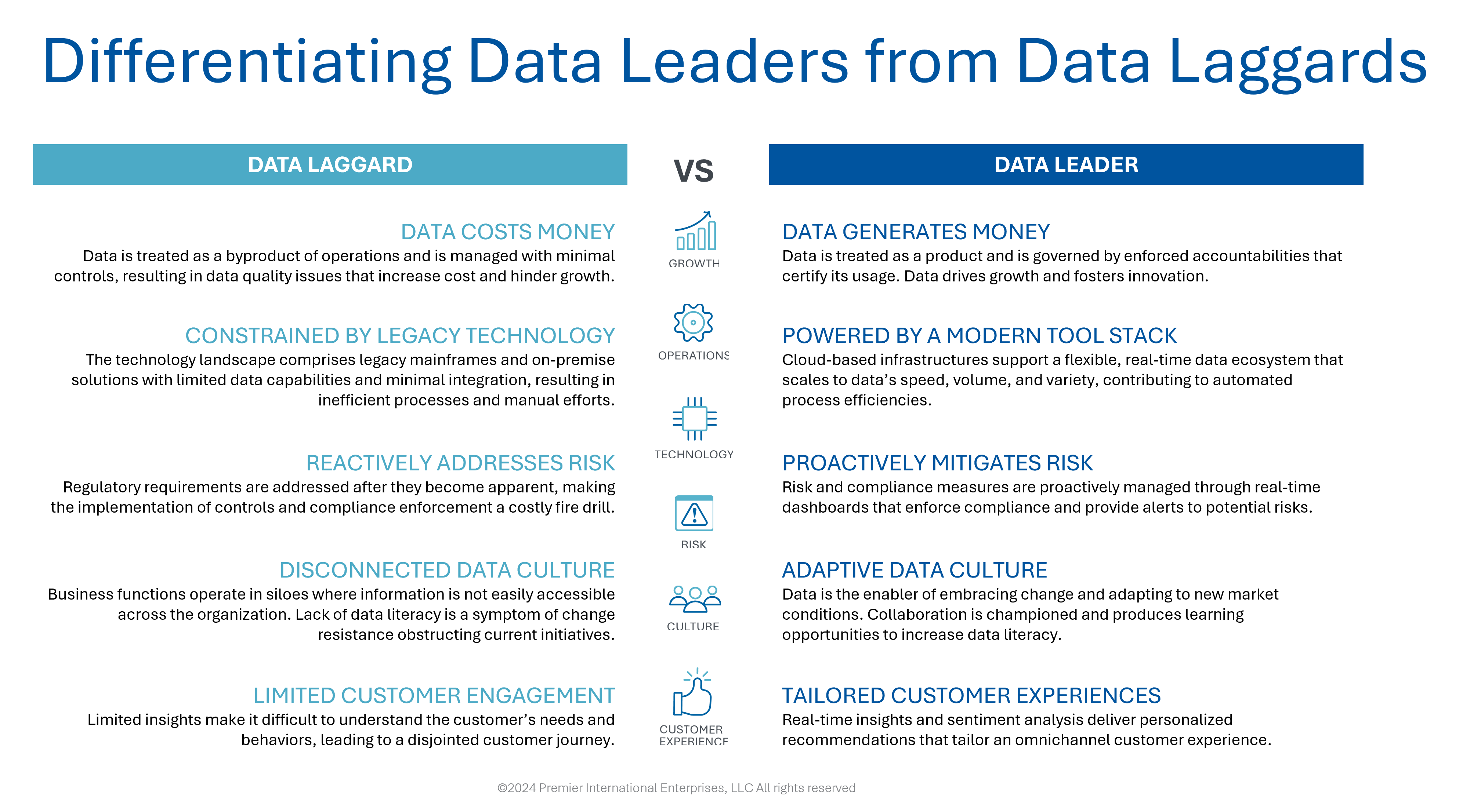
1. Data Culture: Disconnected vs. Adaptive:
Data Laggards often operate with a disconnected data culture. In these organizations, business functions are siloed, making information difficult to access across departments. This fragmentation is exacerbated by a lack of data literacy and resistance to change, which obstructs current initiatives and hampers overall efficiency.
Data Leaders, in contrast, foster an adaptive data culture. Here, data is viewed as a catalyst for embracing change and adapting to new market conditions. Collaboration is encouraged, creating learning opportunities that enhance data literacy across the organization. This culture of adaptability ensures that data is not just collected but also understood and utilized effectively.
2.Technology Infrastructure: Legacy Systems vs. Modern Data Stack
Data Laggards are often constrained by legacy technology. These organizations rely on outdated mainframes and on-premise solutions that offer limited data capabilities and minimal integration. This reliance on legacy systems results in inefficient processes and a high degree of manual effort, stifling innovation and responsiveness.
Data Leaders leverage a modern data stack. They utilize cloud-based infrastructures that support flexible, real-time data ecosystems. These systems can scale to accommodate the speed, volume, and variety of data, enabling automated processes and improving overall efficiency. This modern approach not only streamlines operations but also provides a robust foundation for future growth.
3. Risk Management: Reactive vs. Proactive
Data Laggards tend to address risk in a reactive manner. Regulatory requirements are often met only after issues arise, resulting in costly and inefficient compliance efforts. This reactive stance leaves organizations vulnerable to unforeseen risks and regulatory challenges.
Data Leaders adopt a proactive approach to risk management. They utilize real-time dashboards to enforce compliance and provide alerts to potential risks before they become critical issues. This proactive stance not only minimizes risk but also ensures that compliance measures are integrated seamlessly into daily operations, reducing costs and enhancing security.
4. Customer Engagement: Limited vs. Tailored
Data Laggards suffer from limited customer engagement. Due to insufficient insights, these organizations struggle to understand customer needs and behaviors, leading to a fragmented and disjointed customer journey. This lack of engagement can result in lower customer satisfaction and loyalty.
Data Leaders excel in creating tailored customer experiences. They use real-time insights and sentiment analysis to deliver personalized recommendations, crafting an omnichannel experience that resonates with individual customers. This tailored approach enhances customer satisfaction, loyalty, and overall business growth.
5. Data Value: Costly Byproduct vs. Growth Driver
For Data Laggards, data is often seen as a costly byproduct of operations. Managed with minimal controls, data quality issues abound, leading to increased costs and hindered growth. This perspective prevents organizations from recognizing the full potential of their data assets.
Data Leaders treat data as a valuable product. They enforce robust governance and accountability measures to ensure data quality and certify its usage. By managing data as a critical asset, these organizations drive growth and foster innovation, turning data into a powerful engine for business success.
The journey from being a data laggard to becoming a data leader requires a fundamental shift in culture, technology, risk management, customer engagement, and data valuation. Organizations that embrace these changes can unlock the full potential of their data, transforming it from a byproduct into a strategic asset that drives growth, innovation, and competitive advantage. By understanding and implementing the strategies of data leaders, businesses can position themselves at the forefront of the digital economy, ready to navigate the complexities of the modern market with agility and confidence.
Contact Definian today to engage with one of our data experts who can help you start applying data-first strategies to make the most of your information, gain a competitive edge by analyzing insights that inform decisions, and create value for your organization.

Understanding the Importance of Data Governance
Today, more than ever, organizations generate and rely on vast amounts of data to drive decision-making, innovation, and competitive advantage. Unfortunately, not everyone in an organization understands the importance of a formal data governance discipline and the risks associated without it. Effective data governance ensures data quality, security, and compliance, while poor data governance can lead to significant risks and increased costs. This article explores the critical role of data governance, the risks of neglecting it, and the opportunities it presents for forward-thinking organizations.
What is Data Governance?
Data governance encompasses the policies, procedures, and standards that manage the availability, usability, integrity, and security of data within an organization. Effective data governance aims to guide behaviors on how data is defined, produced, and used across the organization. It ensures that data is consistent, trustworthy, and used responsibly by:
- Establishing Data Ownership: Clearly defining who owns and is responsible for data across the organization.
- Data Quality Management: Ensuring data accuracy, completeness, and reliability.
- Data Security: Protecting data from unauthorized access and breaches.
- Compliance: Adhering to regulatory requirements and industry standards.
- Data Lifecycle Management: Managing data from creation through disposal.
The Risks of Poor Data Governance
Neglecting data governance can lead to numerous risks, including:
- Data Breaches and Security Issues: Without stringent data governance, sensitive information can be exposed to cyberattacks, resulting in data breaches. These incidents can lead to financial losses, reputational damage, and legal penalties. For example, the 2017 Equifax data breach exposed the personal data of over 147 million people, highlighting the catastrophic impact of inadequate data governance and creating a lasting impact on their brand.
- Improved Regulatory Compliance: Streamlined data governance processes eliminate redundancies and improve data accessibility, leading to greater operational efficiency. For instance, a global steel manufacturer reduced costs by hundreds of millions of dollars by streamlining its supply chain data, integrating internal and external data flows, and using the data to optimize its operations.
- Increased Operational Efficiency: Streamlined data governance processes eliminate redundancies and improve data accessibility, leading to greater operational efficiency. For instance, a global steel manufacturer reduced costs by hundreds of millions of dollars by streamlining its supply chain data, integrating internal and external data flows, and using the data to optimize its operations.
- Better Risk Management: Proactive data governance helps organizations identify and mitigate risks related to data security and integrity. This enables them to respond swiftly to potential threats and minimize their impact.
Actionable Recommendations for Implementing Data Governance
To harness the benefits of data governance, organizations should consider the following actionable steps:
- Craft a Strategic Roadmap: Identify the current data governance needs and capabilities among business and technology stakeholders to develop a business case. Establish a vision for data governance that aligns with business objectives and craft a strategic roadmap outlining key initiatives over a multi-year period. This will formalize an agile data governance function that will iteratively scale across the entire organization.
- Formalize an Operating Model: Design an operating model that aligns with the organizational culture to minimize the impacts of change when formalizing a data governance discipline. Clearly define and communicate the roles and responsibilities for members participating in the data governance program. Acknowledge data producers as contributors to defining and complying with data standards and policies. Establish a Data Governance Council to charter a formal data governance program sponsored by executive leadership.
- Compile an Inventory of Critical Information Standards and Policies: Profile data objects and break down business processes to develop a catalog of critical data elements needed for operations, analytics, financial reporting, and regulatory compliance. Rationalize each element and collaborate to establish a working definition, expected standards, and policies for how the data is created and used across the organization. Socialize the catalog outputs so that it is easily discoverable by data producers and consumers.
- Implement a Data Quality Framework: Deploy a framework that enables data quality to be measured against the standards defined in the critical information catalog. Socialize results to stakeholders and data stewards for review. Develop tactical plans to remediate exceptions and improve data quality to meet governed expectations. Monitor data quality through its lifecycle to identify opportunities from a people, process, technology, and a data perspective.
- Educate and Train Employees: Conduct regular training sessions to educate and empower employees about data governance policies, their roles, and the importance of data integrity and security. Use this as a chance to reinforce the value proposition for data governance to mitigate any change resistance.
- Continuously Monitor, Improve, and Scale: Regularly review and update your data governance policies and practices to keep up with changing business needs and regulations. Use feedback and performance metrics to continuously improve the program while measuring efficacy. Maintain a running backlog of data governance use cases and prioritize them based on their value and alignment with business goals. Scale the operating model as you work through various data governance use cases.
For senior executives and leaders overseeing data, implementing robust data governance is not just a best practice but a necessity. Effective data governance mitigates risks, ensures compliance, and unlocks significant opportunities for operational efficiency, informed decision-making, and enhanced customer trust. By prioritizing data governance, organizations can turn their data into a strategic asset, driving innovation and long-term success. By understanding and acting on these principles, executives can steer their organizations towards a future where data is not just managed but leveraged to its fullest potential.
Sources
- Equifax Breach 2017: https://www.ftc.gov/enforcement/refunds/equifax-data-breach-settlement
- Google GDPR Fine 2019: https://www.digitalguardian.com/blog/google-fined-57m-data-protection-watchdog-over-gdpr-violations
- PwC Consumer Trust Survey: https://www.pwc.com/us/en/library/trust-in-business-survey.html
- Good Data Starts with Great Governance: https://www.bcg.com/publications/2019/good-data-starts-with-great-governance
- The Impact of Data Governance: https://www.techtimes.com/articles/304151/20230121/the-impact-of-data-governance-in-multi-cloud-environments-ensuring-security-compliance-and-efficiency.htm
- Risk Management and Data Governance: https://www.microsoft.com/en-us/security/business/security-101/what-is-data-governance-for-enterprise

Overcoming the Hurdles: Getting past the blockers CDOs face to operationalize Data Governance
In today’s vast information landscape, a Chief Data Officer’s (CDO) role is critical for unlocking an organization's data potential. Despite their strategic importance, CDOs face unexpected challenges that hinder their ability to deliver tangible business value, leading to an average tenure of less than a couple of years. In this article, we explore four key areas that impede a CDOs' progress and methods that can help build momentum in achieving data governance objectives.

Investment Uncertainty
Data governance initiatives require investments in resources, technology, and personnel. However, securing buy-in and funding from stakeholders can be daunting, especially when the return on investment (ROI) is not immediately apparent. CDOs must navigate the complexities of justifying the long-term benefits of data governance, which may not yield immediate financial gains. This investment uncertainty can lead to hesitation and resistance from decision-makers, hindering CDOs ability to execute their strategy.
To mitigate these challenges, CDOs must proactively communicate the strategic value of data governance and its potential to drive operational efficiencies, risk mitigation, and competitive advantages. A simple method CDOs can use to quantify value is to assess long-term impacts through the lens of the cost of doing nothing. They should also prioritize high-impact, low-cost initiatives and seek to align data governance efforts with the organization's immediate business objectives, delivering quick wins that provide incremental business value.
People Gaps
Effective data governance relies heavily on the expertise and collaboration of cross-functional teams. However, organizations often face a shortage of skilled data professionals, including data analysts, data engineers, and data stewards. These gaps are often filled by assigning existing resources with additional responsibilities they do not have the time or skills to successfully fulfill. This is further compounded by change resistance, which hinders the CDOs ability to build a data culture. This people gap can create bottlenecks in the implementation of data governance initiatives as CDOs struggle to find the right talent to drive their vision forward.
To address the people gaps, CDOs must build a strong data culture, provide comprehensive training and awareness programs, establish clear roles and responsibilities, and foster cross-functional collaboration. Additionally, they should work closely with their Human Resources department to attract and retain top data talent and engage with executive leadership to secure buy-in and support for data governance initiatives.
Time-Sensitive Initiatives
In a fast-paced business environment, CDOs are often responsible for executing urgent projects that demand immediate attention. However, these time-sensitive initiatives can create conflicts in prioritization, leading to a diversion of resources and focus from long-term data governance initiatives. As a result, operationalizing data governance will lack consistency and continuity.
CDOs must effectively balance addressing short-term demands with maintaining a strong commitment to their overarching data governance roadmap, which is no easy task. Rushing through the implementation of data governance can lead to oversights and errors, resulting in technical debt, data quality issues, and increased complexity in maintaining a unified data governance framework.
To overcome these challenges, CDOs must proactively communicate the strategic value of data governance and its long-term benefits to the Business. They should collaborate closely with business leaders to align time-sensitive initiatives with data governance objectives. By prioritizing business needs with the data governance roadmap, the CDO can ensure the right capabilities are being developed to generate business value incrementally with data governance.
Inability to Demonstrate Value
One of the key challenges that CDOs face is the difficulty in effectively communicating and demonstrating the tangible value of data governance initiatives to stakeholders. Data governance is often seen as an abstract concept, making it hard to quantify its impact on business outcomes.
CDOs must create compelling narratives and metrics that resonate with decision-makers, demonstrating how data governance can enhance operational efficiencies, reduce risks, and generate new revenue streams. Failing to articulate this value proposition may result in a lack of support and buy-in from key stakeholders. Without this buy-in, obtaining the necessary resources, budget, and organizational commitment to implement and sustain data governance initiatives becomes challenging. If data governance efforts are not seen as providing tangible benefits, the CDOs role and authority may be weakened, hindering their ability to deliver their data governance strategy.
To address this, CDOs should proactively communicate the strategic value of data governance through clear metrics, success stories, and quantifiable business outcomes. When data governance performs well, organizations should experience improved data quality and optimized business processes. Socializing these results is essential to demonstrating the value and outcomes realized with the investment in data governance. By tackling these challenges directly, CDOs can position themselves as strategic leaders, driving a data-driven transformation and unlocking the full potential of their organization's data assets.
At Definian, we assist our partners in understanding the fundamental importance of implementing data governance and emphasize the value proposition by educating leaders about the impacts of inaction. CDOs can tackle these common blockers by employing an agile, multi-faceted approach that aligns data governance initiatives with business objectives and secures the required sponsorship and support from the top down while establishing stewardship accountabilities from the bottom up. By empowering CDOs to overcome these challenges, they can showcase the value of data governance and drive sustainable progress within their organizations. Our objective is to ensure that data governance initiatives receive the necessary sponsorship, support, and resources to unlock the full potential of data as a strategic asset.

Navigating Compliance and Talent Management Through Effective HCM Data Governance
For a 30,000-employee industrials company growing rapidly through acquisitions, maintaining accurate HR data was a constant challenge. Each new acquisition brought an influx of disparate data, inconsistent structures, and compliance risks, particularly when meeting federal reporting requirements like Affirmative Action Plans (AAP), Equal Employment Opportunity (EEO), and Fair Labor Standards Act (FLSA) regulations. These gaps in HCM data fundamentals not only strained resources but also delayed strategic decision-making about talent across the organization.
When the company engaged us, their HR team faced a tangled web of challenges. Data preparation for newly acquired companies took up to six weeks, consuming hours of manual effort. Inconsistent job classifications, mismatched AAP codes, and errors in hierarchical reporting were just a few of the recurring issues. Over the course of our partnership, we implemented a series of targeted interventions to clean up their data, automate quality checks, and establish sustainable HCM data governance processes that transformed their HR function.
Diagnosing and Resolving Systemic HR Data Errors
The first step in addressing the company’s HR data issues was to thoroughly diagnose the root causes of their errors. Our diagnostics uncovered a range of problems, from blank or missing fields to misaligned reporting structures. For instance, many employee records were missing critical information, such as job or position data, making it nearly impossible to maintain compliance with federal reporting requirements. These gaps highlighted the need for better HCM data best practices around record-keeping and validation.
We also encountered complex issues related to hierarchical relationships within the data. In some cases, managers and subordinates were incorrectly assigned, creating circular reporting structures that led to confusion and undermined organizational clarity. Other inconsistencies included discrepancies between positions and their corresponding job records, as well as mismatches between organizational units assigned to employees and their roles.
To resolve these challenges, we implemented:
- Rigorous data validation processes that flagged errors and inconsistencies.
- Systematic cleanup of reporting structures, ensuring clarity and alignment.
- Enhanced reporting templates that captured the necessary data fields to meet compliance requirements.
These efforts not only reduced immediate errors but also laid the groundwork for more robust HCM data governance practices moving forward.
Establishing Standardized Validation and Configuration
After addressing the initial wave of data errors, we shifted our focus to preventing future inconsistencies. Standardizing HR data configurations across the parent company and its acquired entities was essential. Disparate systems and manual processes in the acquired companies frequently led to issues such as mismatches between Affirmative Action Plan (AAP) codes and Equal Employment Opportunity (EEO) categories. Similarly, pay scales and personnel subgroups were often misaligned, leading to significant compliance risks and reporting inaccuracies.
We developed standardized templates and automated validation rules that ensured alignment across all entities. For example, we predefined valid combinations of AAP and EEO codes, allowing the system to flag invalid entries before they propagated. We also implemented rules to align job classifications with pay scales, addressing common issues where managerial roles were not correctly tied to corresponding compensation structures.
By creating and deploying these templates and rules, we gave the HR team tools to validate data at the point of entry. This significantly reduced the volume of errors and manual corrections, enabling the team to focus on more strategic tasks. These efforts reinforced the importance of HCM data best practices in ensuring consistent and reliable data.
Automating Data Audits and Reporting
Data quality is not a one-time fix; it requires continuous monitoring. Recognizing this, we partnered with the HR team to automate their data quality audits. Previously, audits were conducted sporadically and often relied on labor-intensive processes. We introduced automated tools created in Applaud to generate monthly diagnostics, a cornerstone of effective HCM data governance.
These automated reports provided a clear picture of data health across the organization. For example, they identified discrepancies where employees’ organizational units did not align with their assigned positions, or where Fair Labor Standards Act (FLSA) classifications were mismatched. By detecting these errors close to real time, the HR team could address them proactively.
We also tailored the reports to meet the needs of different stakeholders, offering division-level breakdowns as well as consolidated organizational summaries. This allowed the company to prioritize corrections efficiently and maintain high levels of data integrity while adhering to HCM data best practices.
Building a Scalable Data Governance Framework
To ensure long-term success, we worked with the company to establish a robust HCM data governance framework. This involved defining clear ownership of HR data fields and creating processes for maintaining data accuracy. We documented standard operating procedures for data validation, error escalation, and corrective actions, ensuring that the HR team could sustain high data quality even as the organization continued to grow.
An integral part of this effort was updating training materials for HR administrators. These materials covered everything from field definitions and job classification standards to the proper configuration of manager assignments. By empowering the HR team with the knowledge and tools they needed, we helped build a culture of accountability and precision—essential for maintaining HCM data fundamentals across a rapidly expanding organization.
Optimizing Processes for Acquired Companies
One of the most significant outcomes of our engagement was the transformation of the data onboarding process for newly acquired companies. Previously, it could take up to six weeks to prepare and integrate HR data from a new acquisition—a process fraught with errors and inefficiencies. By adding field derivations, automated validity checks, and simplified handoffs, we reduced this timeline to just one week of part-time effort.
This optimization not only accelerated integrations but also ensured that acquired companies were aligned with the parent company’s standards from day one. Pre-configured templates and automated validation reduced the burden on both the parent company and the acquired entities, creating a seamless transition. These efforts showcased the practical application of HCM data best practices in real-world scenarios.
The Business Impact: From Chaos to Confidence
By the end of our engagement, the company’s HR function had undergone a dramatic transformation. Key outcomes included:
- Regulatory Compliance: The company achieved consistent compliance with federal AAP, EEO, and FLSA requirements, significantly reducing regulatory risks.
- Enhanced Data Quality: Automated diagnostics and continuous monitoring ensured that errors were caught and corrected before they could impact reporting or decision-making.
- Operational Efficiency: Manual data preparation efforts were reduced by 80%, freeing up valuable time for the HR team to focus on strategic initiatives.
- Scalable Processes: A robust HCM data governance framework positioned the company to manage HR data effectively across future acquisitions.
This transformation highlights the power of mastering HCM data fundamentals. Through strategic interventions in HCM data governance, quality, and migration, we helped this company turn its HR data challenges into strengths, providing a solid foundation for compliance and talent management. As a result, they are now better equipped to understand and leverage their workforce, ensuring their continued growth and success.
By emphasizing HCM data best practices, robust HCM data governance, and the essentials of HCM data fundamentals, organizations can build sustainable frameworks that not only meet compliance standards but also enable strategic workforce management. Let this story inspire your journey to smarter, more reliable HR data.

Equipping a Workday Implementation with Data Governance
Background
Our client, one of the largest US ports, was preparing for a vital multi-year ERP transformation journey with Workday at its core. Acknowledging the pivotal role of data and recognizing gaps in their existing data management capabilities, the CIO sought to ground this transformation initiative with a formal data governance function – imperative for aligning business objectives with data requirements and enabling the adoption of Workday through data fidelity and trust.
Choosing Definian
Definian stood out with a unique value proposition that demonstrated expertise not only in understanding the intricate data requirements of a Workday implementation but also in presenting a strategic vision for data enablement that will drive implementation efforts to success. This included foundational data management disciplines for data governance and data quality to not only support the ERP go-live but also are required to maintain data integrity in the future. This, coupled with a proven track record in navigating organizations through complex data transformation initiatives, instilled confidence in Port leadership, affirming our suitability as the ideal partner.
The Process
Definian delivered a multi-phased tactical plan to develop and execute a strategy to formalize a data governance discipline at the Port. The approach tailored and launched a data governance framework aligned with the business operating model. Recognizing that data governance was a novel concept at the Port, an educational component was incorporated to facilitate change adoption and operationalize data governance concepts into an ongoing data management discipline. This was accomplished by working through use cases with the council centered on four targeted end-to-end business processes. Following the launch, Definian transitioned data governance facilitation to the Port’s appointed data governance leader and provided them guidance to sustain the momentum required to operationalize the council.
The objectives of each phase were:
Phase 1: Strategic Assessment
· Obtain a current state understanding through stake holder engagement
· Envision a desired state for data governance tailored to the Port’s operating model
· Translate gaps into prioritized capability-building initiatives
· Define a strategic roadmap of initiatives to implement data governance
Phase 2: Data Governance Launch
· Charter the launch of an Interim Data Governance Council
· Educate concepts for data governance and data quality frameworks
· Develop data governance rigor by working through targeted use cases
Phase 3: Operationalize Data Governance
· Sustain data governance momentum from the initial launch
· Transition facilitation to the Port’s data governance leader
· Compile formal data governance standards and policies for critical information
Results
By delivering on this initiative in less than six months, the outcomes have been promising as the Port approached its Workday implementation.
- Provided a shared understanding of the Port’s current data management capabilities and desired vision for data governance
- Launched a centralized data governance operating model comprising data owners and subject matter experts that’s Business-driven and IT-supported
- Established a cross-functional Data Governance Council promoting collaboration in formalizing data requirements, standards, and policies across the Port’s applications, processes, and reports
- Educated data governance and data quality concepts into practice through the execution of targeted use cases that generated data governance artifacts
- Achieved consensus with an initial inventory of critical data elements and their supporting definitions, standards, and stewardship accountabilities, providing clarity and eliminating redundant efforts from future Workday data migration and requirements tasks
In conclusion, through strategic implementation of data governance, our client not only embraced the intrinsic value of their data but also secured a resilient foundation for their Workday transformation, ensuring a more rapid and cohesive transition tailored to their long-term goals.

IDMP Compliance: Business Priority, Governance Imperative
The ISO Identification of Medical Products (IDMP) standard is one of the most complex data challenges facing life sciences companies today. The regulation requires unique identification of pharmaceutical products using a standardized language to improve the exchange of data between pharmaceutical companies and global regulators.
Meeting the full scope of the IDMP regulation (which includes five distinct standards) will require ongoing access to accurate, high-quality, and trustworthy data collected from multiple systems across your enterprise. Good data governance is critical. And it’s why we’ve partnered with Informatica to deliver a comprehensive solution to help you support better data stewardship, data quality, and data monitoring.
An End-to-End Data Governance Solution
Definian has designed a comprehensive data governance solution to address IDMP compliance from start to finish. We begin by establishing business glossaries that define terms so that data users across the enterprise share a common language. We then identify critical data elements from across your source systems and display the lineage, owners, and stewards of that data in a searchable data catalog. We also establish data quality rules and metrics to apply against your data so that you can easily monitor governed assets with 3 compliance dashboards. To simplify reporting with consistent data values, we harmonize your reference data according to IDMP rules. Our IDMP solution is based on Informatica Axon, Enterprise Data Catalog, Informatica Data Quality, Informatica Reference 360 and Informatica MDM (see Figure 1).

Definian has experience delivering data governance solutions that help organizations improve data management processes to meet stringent compliance regulations. We work across policy, data, and technical domains to help you achieve results faster by digging deep into data policies to deliver the strategic solutions your organization needs to transform regulatory compliance into a business differentiator.
Establish a Foundation for Innovation
As the regulatory landscape continues to grow more complex, life sciences organizations are seeking better ways to adapt and respond. By establishing a sustainable data governance framework now, you can meet new imperatives and priorities with clarity and intelligence, integrating high quality, traceable data into your organization’s ongoing compliance programs to better support its business strategy, mission, and goals.

Operationalizing Compliance Controls
At Definian, we understand the challenges associated with the ever changing compliance environment. Whether the compliance is driven by external regulation or by internal corporate strategy, the state of compliance can sometimes consist of unknowns and best guesses.
Organizations may have a clear understanding of what needs to be complied with and the supporting polices, and standards may have been developed. The challenge often facing organizations is ensuring these policies and standards are being adhered to and that the scope of the adherence is comprehensive. This is where controls play a key role.
The development and use controls to oversee the implementation of policies and standards is nothing new. However, merely authoring controls and mandating their use does not ensure they are being followed. How do we know the controls are being adhered to? How do we know the controls are still current? How do we know that controls are aligned with the appropriate subject content?
Recently, Definian partnered with a multinational financial services organization that needed to ensure compliance to financial regulations and internal policies. Their challenge was to ensure the correct controls were overseeing the correct content in the correct procedural context.
Our approach was to look at the various procedural components as distinct business constructs. This included:
- The policies and standards that inform the control;
- The resulting controls;
- The content which is subject to control;
- The processes / procedures that generate or consume the respective content.
We then represented these components as distinct business objects in an appropriate tool, thereby enabling active management and governance including:
- Lifecycle management – The use of workflows to govern the creation, vetting and approval of the business objects;
- Ownership and accountability – The assignment of business object ownership to respective role players;
- Establish lineage – The mapping of relationships between the policies and standards with the controls that enforce them. The mapping of relationships between the controls and the content to which they oversee. The mapping of relationships between content and the processes/procedures in which it is was involved.
Once management and governance were in place, the opportunity to measure and monitor compliance presented itself. A given control could be viewed in multiple contexts; what policy or standard it was monitoring, what content it was overseeing and what processes/procedures were involved. Similarly, a given process/procedure could be assessed for what content it generates or consumes and what controls oversee them.
As noted, the implementation of workflows allowed for the management of business object lifecycles. Workflows were also leveraged to ensure continuous monitoring of the control framework. The recertification of controls was imposed at set intervals and the addition of new content was subject to review to ensure the appropriate controls were associated. Dashboards were created to measure control coverage and identify relevant content not subject to control.
Definianl can help your organization with the development of a control framework including the identification of new controls, the codifying of existing controls and the building of a comprehensive control lineage. Reach out to us today!

Smart Meters Implementation using Informatica
Smart meters tracks the energy consumption on the system in which it is connected to. It tracks the power consumed and sends the real time data which can be used for creating insights on energy optimization. It also helps to control the power consumed by each customer and can be controlled remotely. Data governance around smart meters using Informatica involves implementing processes and policies to ensure the quality, security, and compliance of data generated by smart meters.
By utilizing Informatica tools we can define the business glossaries related to smart meters in Informatica Axon, show its association with the technical metadata (tables, columns) from Informatica Enterprise Data Catalog and see the lineage that shows data movement around smart meters across the different source and target platforms like file systems and databases. Figure 1, shows the Glossary taxonomy created in Informatica Axon.
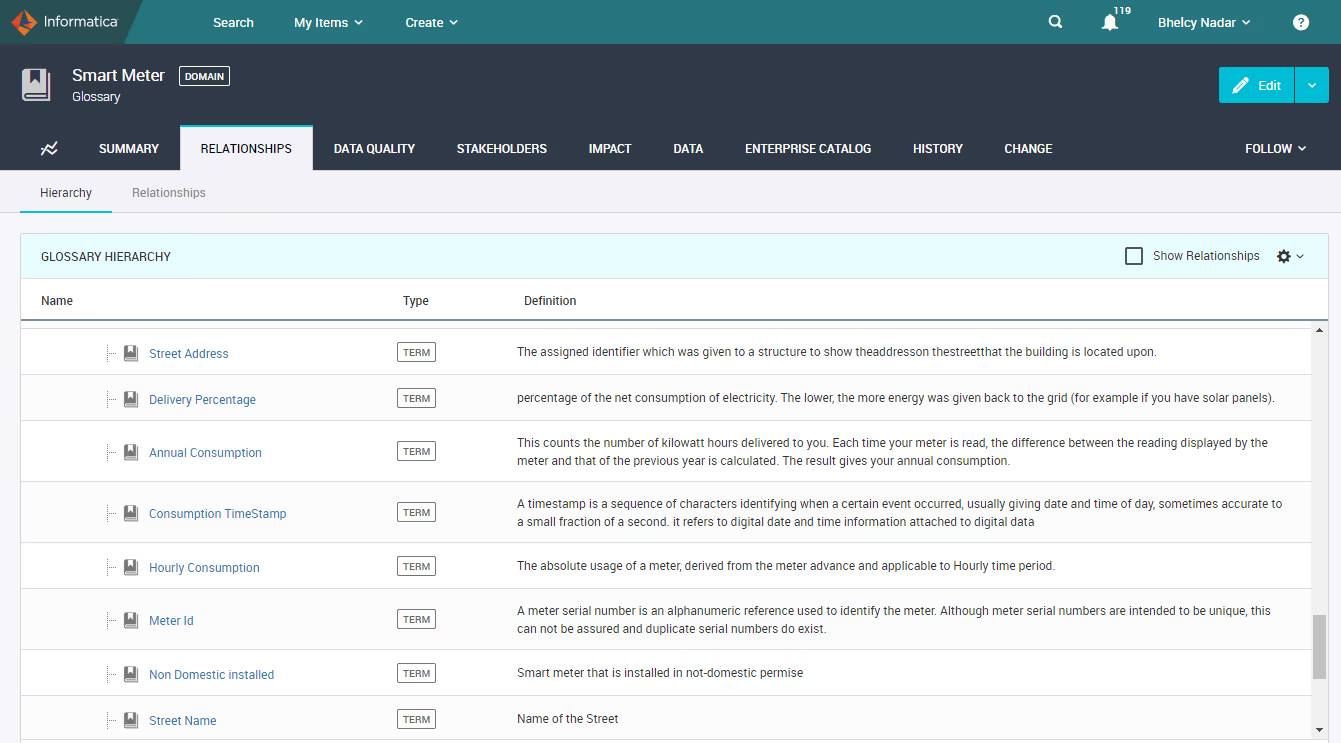
Figure 2, shows the association of Axon business term hourly consumption as business title to the technical field in Informatica Enterprise Data Catalog. This can be done manually or by enabling the business glossary association. It also shows the description populated from Axon and the value frequency of the data.

Figure 3, shows lineage and impact analysis between AWS S3 file system and Snowflake in Informatica Enterprise Data Catalog.
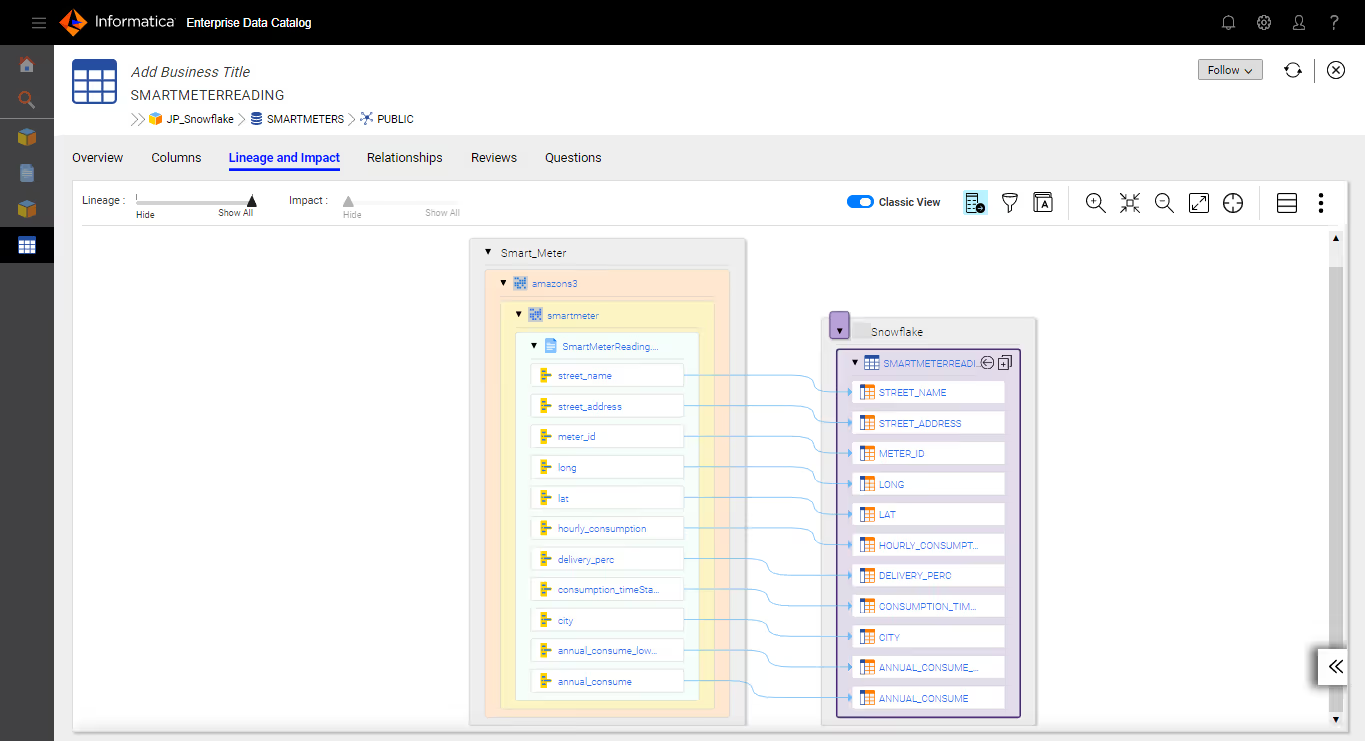
One of the most important functions of smart meters is the recording of hourly consumption done by the consumer. This data is essential as the supply of electricity can be monitored. By using Informatica Big Data Quality we can profile the dataset and execute technical data quality rules to monitor and identify exceptions within the data sets. The technical data quality rule defined in Informatica Data Quality has an expression defined to validate the data. This rule is related to the local data quality rule created in Informatica Axon where the results will be updated based on the schedule. If there happens to be an outage in the supply the data quality rule will recognize the exception. This is further updated in the local data quality rule of Informatica Axon. Based on the change in result a workflow will be triggered to notify the steward about the exception occurred. Figure 4, shows the exceptions generated in Informatica's Data Quality platform.
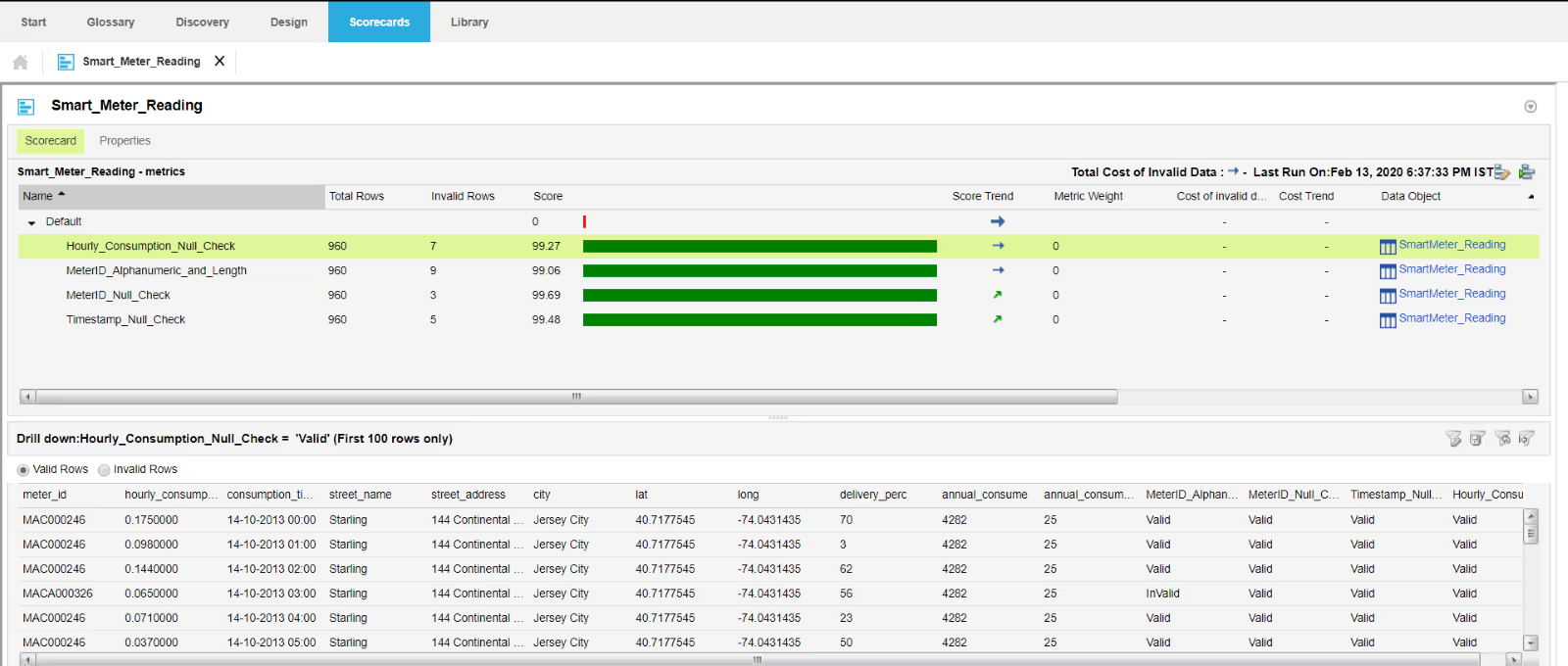
Figure 5, shows the results updated in Axon local data quality rule.
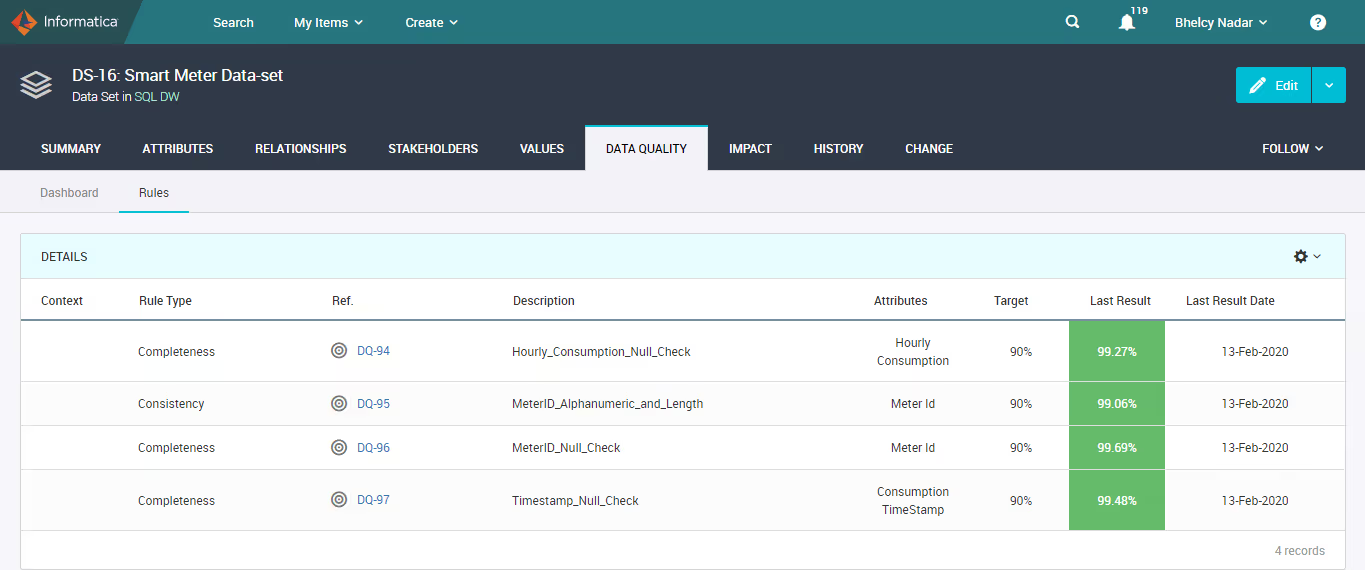
The smart meter data will have information of the consumer like the meter Id the subscriber’s usage patterns which is highly sensitive. By using Informatica Data Privacy Management we can scan the data and flag the information as sensitive. This helps in understanding the sensitive data and further masking it by using extensions created for Informatica Test Data Management. Figure 6 shows the masking technique and the data before and after masking.
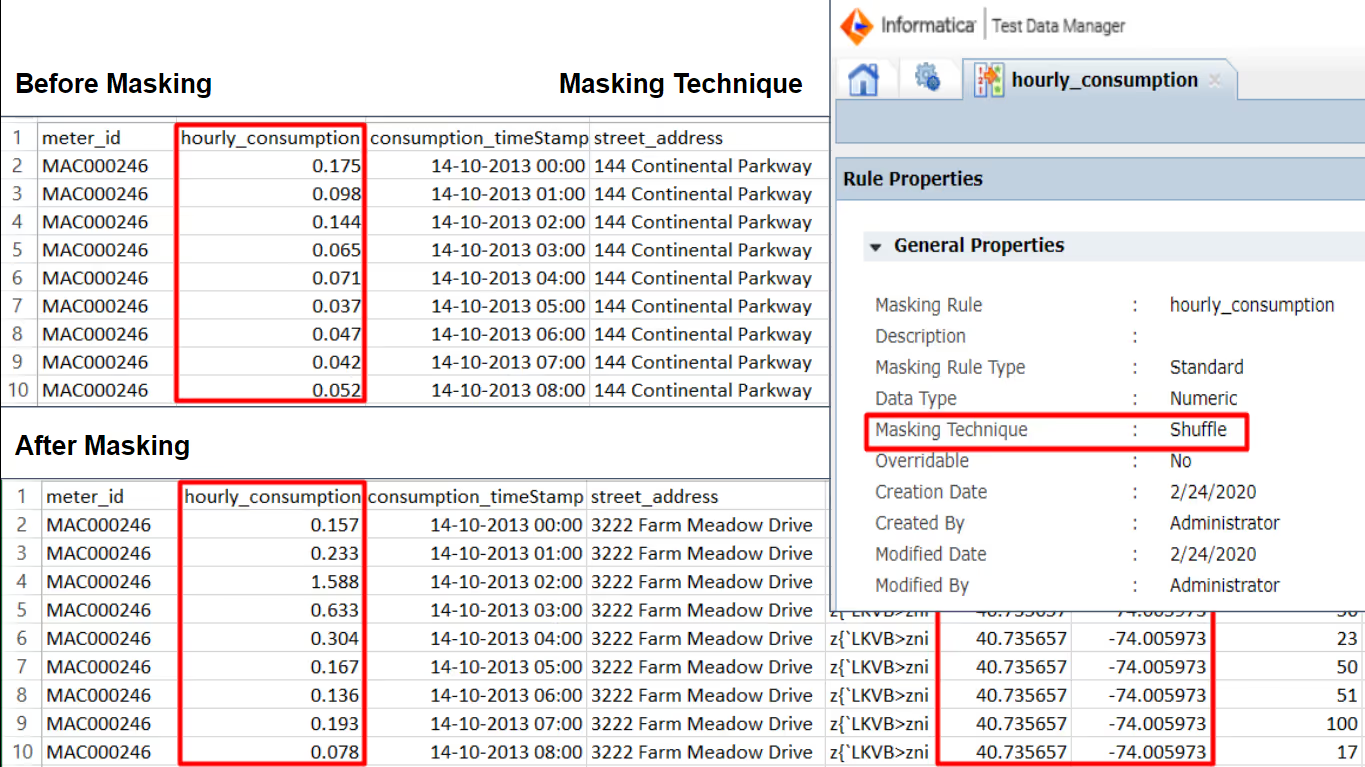

Model Governance Aligning Information Governance With Model Risk Management
As organizations continue to use data to drive value, the need to understand, manage, and protect data assets has become increasingly critical. Many organizations have instituted data governance programs to manage their data more collaboratively and transparently. Simultaneously, it seems, data has gotten more complex as machine learning algorithms drive insight at scale, introducing new data risks, particularly in the financial industry. Regulators responded by imposing controls designed to instill a more disciplined approach to model risk management.
The goals of information governance and model risk management are closely related—to deliver consistent, trustworthy, and reliable data for improved business intelligence. Unfortunately, at many organizations these two data management approaches are often misaligned: roles and responsibilities often conflict, leaving stakeholders across the organization confused about how to apply required governance and model management standards.
Today, when a global pandemic has called into question the models financial institutions have traditionally relied on, bringing these two disciplines into alignment is imperative for institutions that want to verify that their high risk models are performing correctly and in accordance with enterprise-wide data governance standards.
The Model Governance Playbook
At Definian we provide a proven, systematic approach for reducing model risk through more transparent and collaborative model governance.
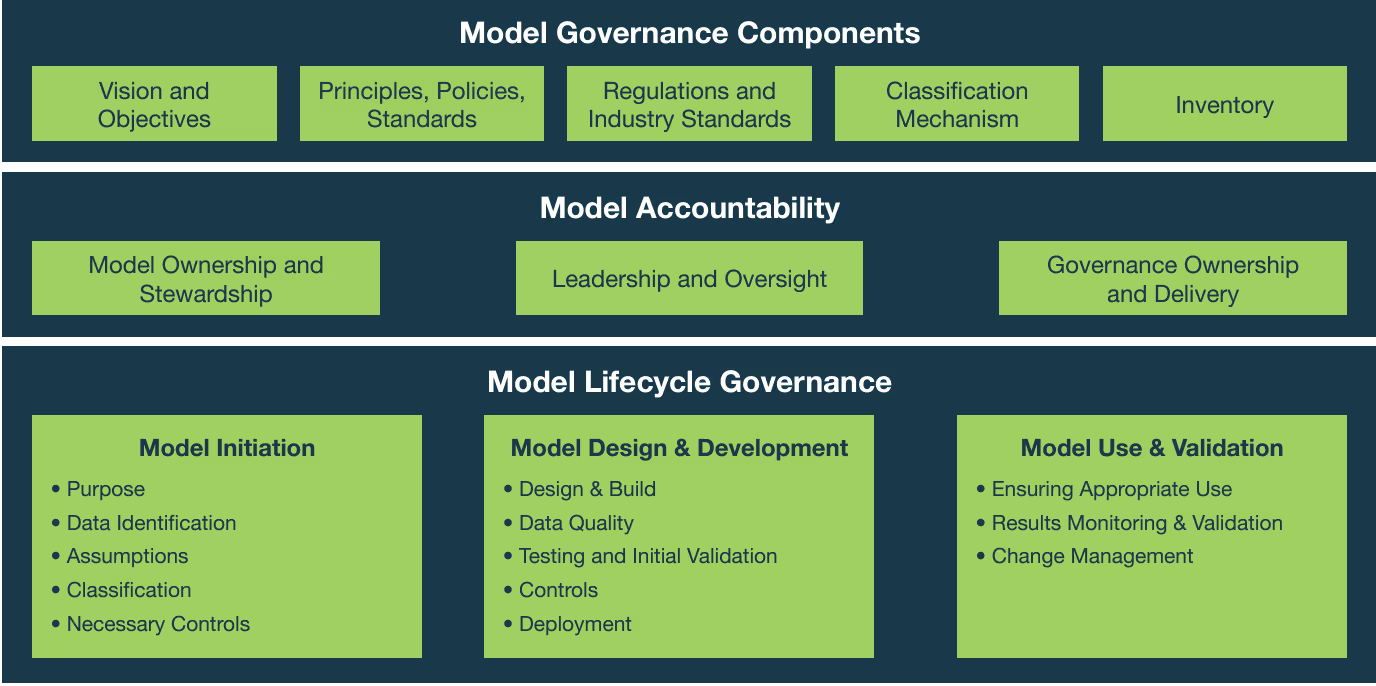
Our Model Governance Playbook helps organizations align enterprise data governance standards with model risk management guidelines. We engage stakeholders across your organization to:
- Collect and verify principles, policies and standards for managing model risk
- Develop an enterprise inventory along with the metadata you will need to maintain it
- Design a risk classification mechanism to determine the level of model risk
- Create an operating model for managing risk across the model lifecycle
- Manage risk more reliably at every stage, including model initiation, development, use, and validation.
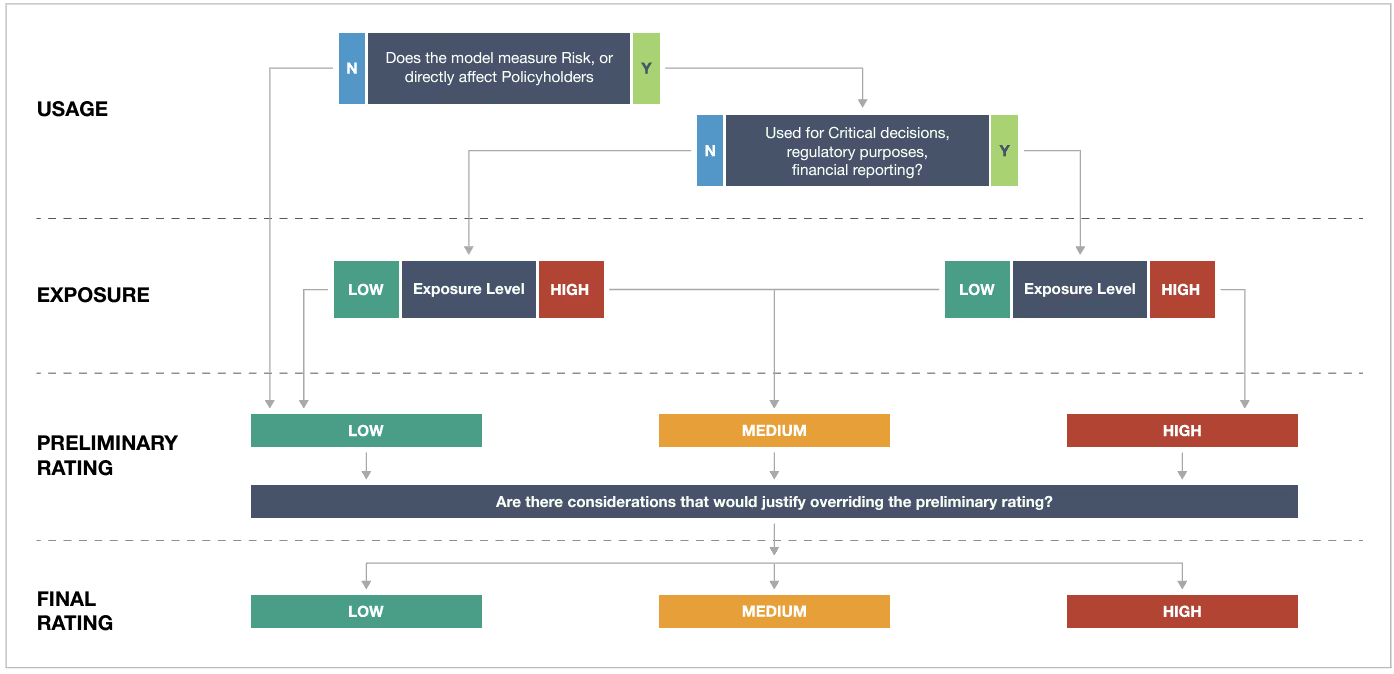
Benefits
At a time when financial institutions are being called on to adjust their data and methodologies to reflect a post COVID-19 world, aligning enterprise-wide data governance policies with model risk management will deliver:
- Benefits At a time when financial institutions are being called on to adjust their data and methodologies to reflect a postCOVID-19 world, aligning enterprise-wide data governance policies with model risk management will deliver:
- Improved compliance with both information and model governance standards
- Better alignment of roles and responsibilities
- Enhanced compliance with regulatory policy
For more information about how your organization can begin aligning its governance initiatives to deliver more compliant, accurate, and trustworthy data to stakeholders, call us today.
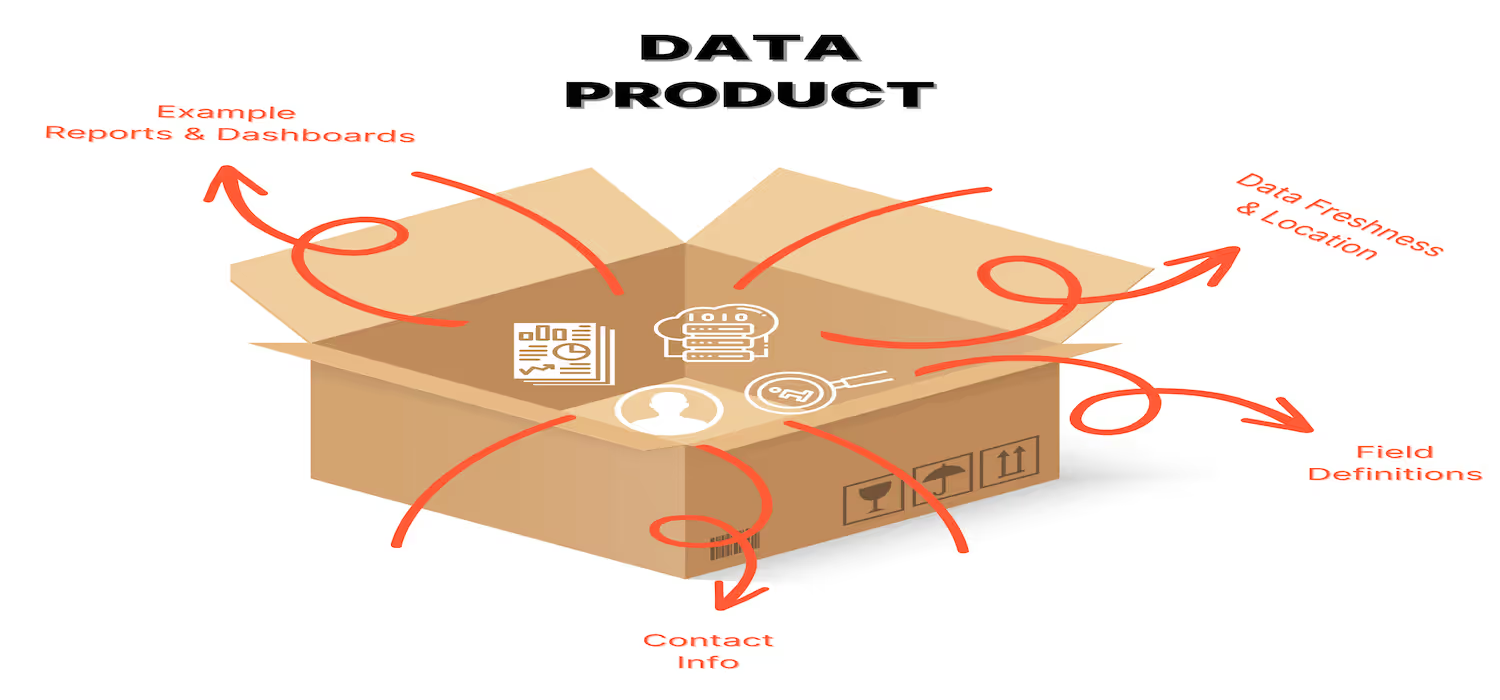
Data Products Configuration in Collibra Data Intelligence Cloud
In the context of data mesh, "data products" refer to self-serve, domain-oriented data assets that encapsulate a specific business capability.The concept of data mesh, popularized by Zhamak Dehghani, emphasizes decentralizing data ownership and treating data as a product.
By adopting the principles of data mesh, organizations aim to overcome challenges related to data silos, centralization, and scalability, ultimately improving the agility and effectiveness of their data capabilities.
5 steps to configure Data Products in Collibra
- Define Data Products
A business intelligence report may be classified as a data product. Figure 1 shows a PowerBI-based Inflation report in Collibra. The report also includes a custom attribute for the value that has been assigned to the report.

- Develop Derived Data Products
Derived data products are based on one or more data products. For example, a bank has an Office of the Comptroller of the Currency (OCC) Compliance data product, which is derived from the Report Certification data product, which is derived from several report data products including Inflation (see Figure 2).
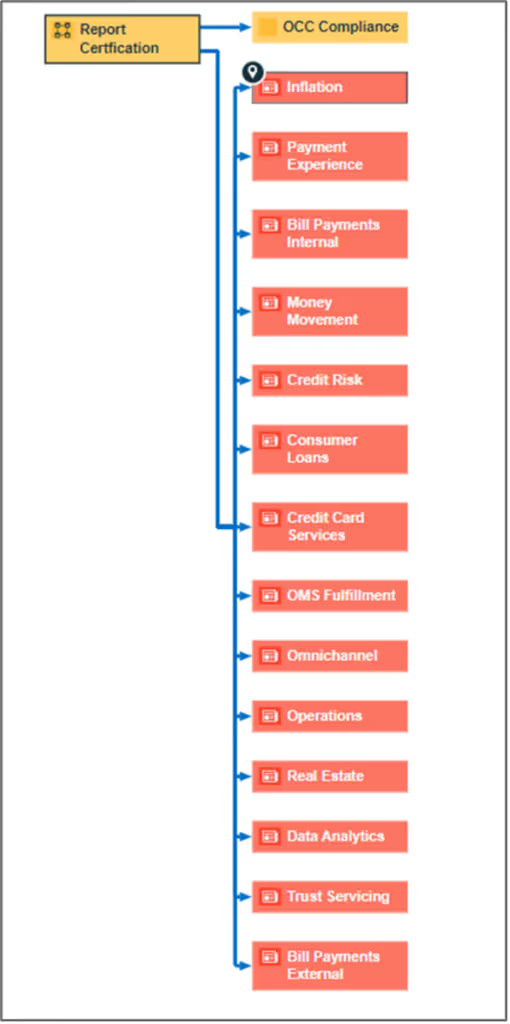
- Establish Data Quality Scores for Data Products
The data quality score from Collibra OwlDQ may be appended as a custom attribute to the data product. For example, the data quality index for the Customer Master data product is 80 percent (see Figure 3).

- Agree on Data Privacy Rules for Data Products
Data products need to be constrained by data privacy rules. For example, the Chat Log data product is constrained by a rule that highly confidential data such as Social Security Number must be masked before usage for analytics (see Figure 4).

- Create Customer-Specific Contractual Rules for Data Products
Data products also need to be constrained by contractual rules that are specific to customers. For example, an investment manager may have customer contracts that permit differing levels of data usage. The investment manager’s contracts with IBM and Honeywell only permit usage of 401(k) participant data within the app. However, the contract with Information Asset does not have any such usage restrictions (see Figure 5).


